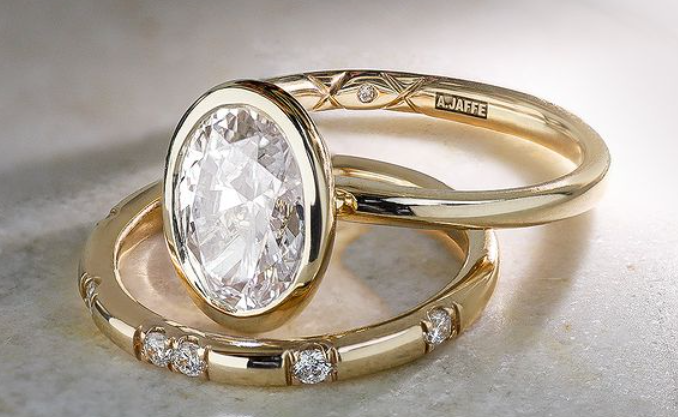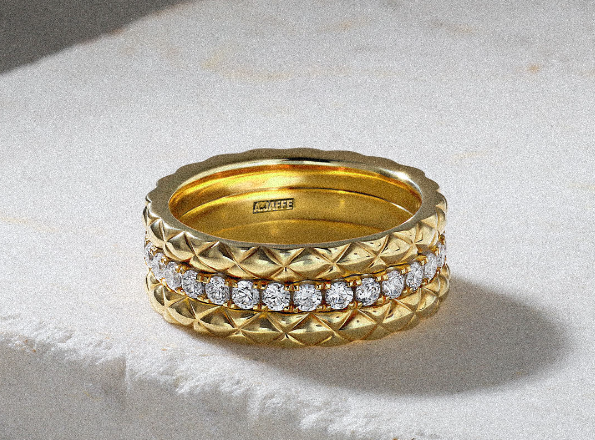We use cookies to provide a personalized site experience. By continuing to use & browse this site, you agree to our use of cookies and to our Privacy Policy.
Understanding Diamond Clarity - Decoding the 4Cs - Part 3

If you are new to this blog, you might be wondering why you have landed on “Part 3” of this series of articles. Well, while we are not going in any specific order, we urge you to also read Part 1 and Part 2 of the series once you are done reading this piece. For context, we are discussing the concept of the 4Cs that are used for gauging the quality of any diamond – cut, color, clarity, and carat weight. If you have been contemplating buying a designer engagement ring or an exquisite wedding ring for yourself or your partner, it bodes well that you have stumbled upon this article. Read on!

Since we have already discussed the cut and color aspects in our previous blogs, let us jump straight into the concept of diamond clarity.
What exactly does diamond “clarity” refer to?
The clarity of any diamond is measured based on the presence or absence of inclusions and blemishes in it. Inclusions refer to a diamond’s irregularities that are an indirect result of certain natural elements around it and get trapped inside the stone during its formative stages. Blemishes refer to any imperfections that are a direct result of the diamond’s cutting and polishing processes. The types and degrees of such irregularities play a big role in defining the gemstone’s brilliance, fire, beauty, color, and aesthetic appearance.
How is diamond clarity assessed?
The GIA, or Gemological Institute of America, is a lab that defines the clarity scale for diamonds which typically ranges from Flawless to Internally Flawless to Slightly Included to Included. Here, “included” refers to the blemishes or inclusions that we have discussed above. Diamonds with an “included” rating are generally low on the clarity, beauty, and price scale.
Okay, we know that you don’t need to deep-dive into the technicalities of how diamond clarity is graded, but it is always good to know how things work. Since the world of jewelry is replete with fakes and dupes, it is always a wise decision to check the lab certification and ensure that you always get a certified and ethically sourced diamond.
Typically, any diamond that has a good or high clarity grading is generally more expensive and also equally rare because it exhibits greater visual beauty. Like you might already know, diamonds that have the ability to reflect and refract light with maximum brilliance and fire tend to look more stunning than their relatively low-clarity counterparts.
7 things to consider while choosing a diamond clarity
While reading about the grading might lead you straight to the most flawless and aesthetically striking diamond, it might not always be the right choice for you. Here are a few things to bear in mind when selecting a diamond clarity grade:
- Make sure you know what your budget limit is so you do not end up splurging more than what you are prepared for. Finding that ideal balance between what you love and what fits your budget is the first step to getting the right diamond engagement ring or diamond wedding band.
- If the color and size of the diamond is more important to you, it is okay to compromise a little bit on the stone’s clarity.
- Most diamonds in the world are imperfect, so it is natural for a seemingly perfect stone to have microscopic irregularities.
- Minor imperfections generally do not have a massive impact on the diamond’s appearance (at least to the naked eye).
- The bigger the stone size, the more likely it is for you to notice the so-called irregularities. If you are convinced about buying a ring that features a large stone, it would make sense to then go for a high grade in terms of diamond clarity.
- Even if you choose the most expensive stone which is impeccably flawless and clear, there is a good chance that everyday wear and tear, exposure to natural elements, and contact with other materials in your daily life may cause the stone to lose a little bit of its spotless perfection over a period of time.
- Always prioritize your (or your partner’s) personal preferences over and above the technical specifications of the diamond. In the end, the ring and the stone encrusted in it should “mean” something to both of you. That is what matters the most.
View our collection of custom-fit diamond contour wedding band here.
Conclusion
Diamond clarity is one of the primary parameters (along with color, cut, and carat weight) that is used to determine the quality and cost of a diamond, eventually also playing a big hand in governing the look, feel, and price of your engagement band or wedding ring. We hope this piece has helped you understand the concept of diamond “clarity” and how certain natural inclusions, imperfections, blemishes, or irregularities are a part of these naturally mined stones.

You can now check the clarity scale to determine what level of flawlessness you are okay going ahead with, or consult your jeweler about your diamond’s clarity, eventually helping you make an informed choice when buying a ring or any other piece of diamond jewelry.
For over 120 years, A.JAFFE has been the go-to choice for exquisite diamond jewelry for all occasions. At A.JAFFE, we offer the finest selection of premium diamond jewelry, including bridal jewelry. Choose from our specially curated online catalog of designer engagement rings and diamond wedding bands for women or walk into an exclusive A.JAFFE retailer near you for an in-person showing.
Discover the allure of princess cut diamond engagement ring.






